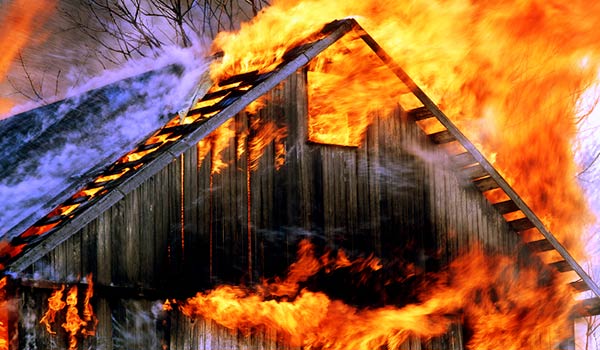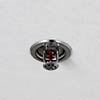
Protect Agency Property by Managing ExposureLoss and exposure based risk management means being smart on two fronts — addressing your agency’s loss trends as well as the exposures you face. Ideally, those exposures never become losses.
“Property losses have been the second-largest loss leader for PDRMA members over the past 10 years,” explains Dane Mall, PDRMA Risk Management Services Manager. “And leading the list of exposure severity is fire.”
When you add up the costs of a fire, you need to include time to reconstruct a facility and the frustration of your patrons due to any inconvenience. While the frequency of fires is low, the severity of such a loss is high. Fire has destroyed maintenance garages, historical sites, storage barns and other facilities, most often when they were unoccupied or vacant.
  Begin with the Basics Begin with the Basics
“Every agency should have formal, written fire prevention programs in place to manage exposures,” says Mall. “Specify inspection frequencies and include checklists as a record of those inspections. Talk with your PDRMA Risk Management Consultant to be sure your procedures address fire exposure in all your facilities.”
  Smoke and heat detection systems, along with alarms, are the best way to manage fire exposure. If new construction is on the horizon, PDRMA’s Pre-construction Design Guidelines (LRN #1599) can help. Developed in conjunction with Kodiak Fire Protection, these guidelines include a no-cost, two-part review of the initial project design by Kodiak along with the automatic fire protection plans. Smoke and heat detection systems, along with alarms, are the best way to manage fire exposure. If new construction is on the horizon, PDRMA’s Pre-construction Design Guidelines (LRN #1599) can help. Developed in conjunction with Kodiak Fire Protection, these guidelines include a no-cost, two-part review of the initial project design by Kodiak along with the automatic fire protection plans.
“That’s where our services benefit PDRMA members the most,” says Dan Fritz, Senior Consultant for Kodiak. “We make sure the plans meet National Fire Protection Association standards, PDRMA requirements and architectural specifications.”
Evaluate your Facilities
If expansion plans are not in your agency’s future, then conduct a complete evaluation of what your current facilities have in terms of existing or needed detection/prevention systems.
“Monitored fire detection systems that immediately alert your agency, police and fire departments to heat, smoke or flame can help prevent a significant property loss,” says Gerrit Prince, PDRMA Risk Management Consultant. “If all of your facilities do not have this protection in place — or if what’s there needs to be improved — start budgeting for those projects today.”
Managing your agency’s property exposures is smart risk management and can reduce the severity of — or even prevent — a loss. Protect your property by evaluating your current fire prevention program. Spending money on a fire detection system is far less costly than having to rebuild a facility destroyed by fire.
PDRMA Resources
- LRN #1599 – Pre-construction Design Guidelines.
- LRN #119 – Monthly Building Fire and Property Conservation Checklist.
- LRN #199 – Vacant/Unoccupied Buildings — Safety and Security.
|

